The Jardin des Plantes is one of the most famous parks in Paris, located in a central area of the French capital. Known for its beauty and vast collection of plants, the park hosts several attractions run by the National Museum of Natural History. For example, the Grand Gallery of Evolution, one of the most visited museums in Paris, and the Ménagerie, a zoo housing various animals.
Table of Contents
Jardin des Plantes in Paris: from herbal garden to public park
The Jardin des Plantes is one of the world’s oldest and most significant botanical gardens, situated in Paris. It was founded in 1635 as the Jardin Royal des Plantes Médicinales by the royal physicians Jean Héroard and Guy de La Brosse. Following the French Revolution, it changed its name to Jardin des Plantes.
PLAN YOUR TRIP TO PARIS
Save money in Paris with the Paris City Card or the Paris Museum and Experiences Pass. Get free entry to major museums, climb the Eiffel Tower, and enjoy a Seine cruise and tourist bus.
To stay connected in France, remember to buy an Airalo eSim online, with data and phone coverage for your trip to Paris.
Right from the beginning, it was used as a place for studying and observing nature, thanks to the contributions of scientific personalities like Georges-Louis Leclerc de Buffon, André Thouin and Geoffroy Saint-Hilaire. It was also used to acclimate plants from overseas, including the Java coffee that Antoine de Jussieu cultivated.
Since 1729, the park has housed royal zoology and mineralogy collections. Later, the Great Gallery of Evolution and the Gallery of Palaeontology and Comparative Anatomy’s buildings were added to the original glasshouses. During the 20th century, the garden underwent further modifications, including creating new spaces such as the Alpine Garden, the Ecological Garden and the Iris Garden.
Presently, the Jardin des Plantes serves as a place for scientific research and conservation and a public park. It is spread across 28 hectares, divided into different gardens and spaces. Apart from being an excellent place to relax with the family or take a stroll, the park also plays a vital role in the conservation and management of plant collections worldwide.
Jardin des Plantes
57 rue Cuvier
75005 Paris
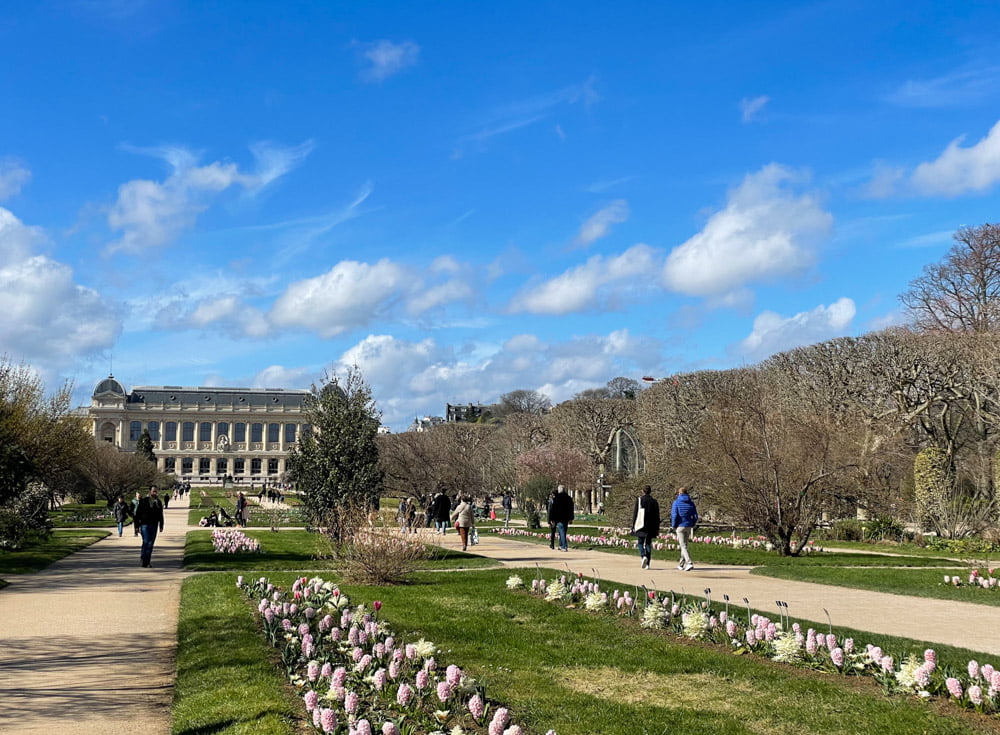
The attractions of the Jardin des Plantes in Paris
Besides being a place of scientific research and conservation, Jardin des Plantes in Paris is also a tourist attraction with many things to see, alone or with the family, such as the labyrinth, historical trees, flowers and gardens, greenhouses and the Ménagerie zoo. If you are travelling with children, this public park is also a perfect green oasis to take a break while exploring the French capital.
The labyrinth of the Jardin des Plantes
The labyrinth of the Jardin des Plantes, designed by Edme Verniquet in 1788, surrounds the park’s characteristic belvedere, made of a metal structure. The attraction is top-rated for its path of two-metre-high hedges leading to the central tower with a panoramic view of the garden.
Labyrinthe
40 rue Geoffroy Saint-Hilaire
75005 Paris
Historic trees
The Jardin des Plantes in Paris has 20 historical trees over 100 years old. Among them are the cedar of Lebanon planted by Bernard de Jussieu in 1734, ginkgo biloba trees over 220 years old, a Sofora of Japan-born from a seed planted in 1747 and flowering only after 30 years and black walnut trees of America planted around 1862.
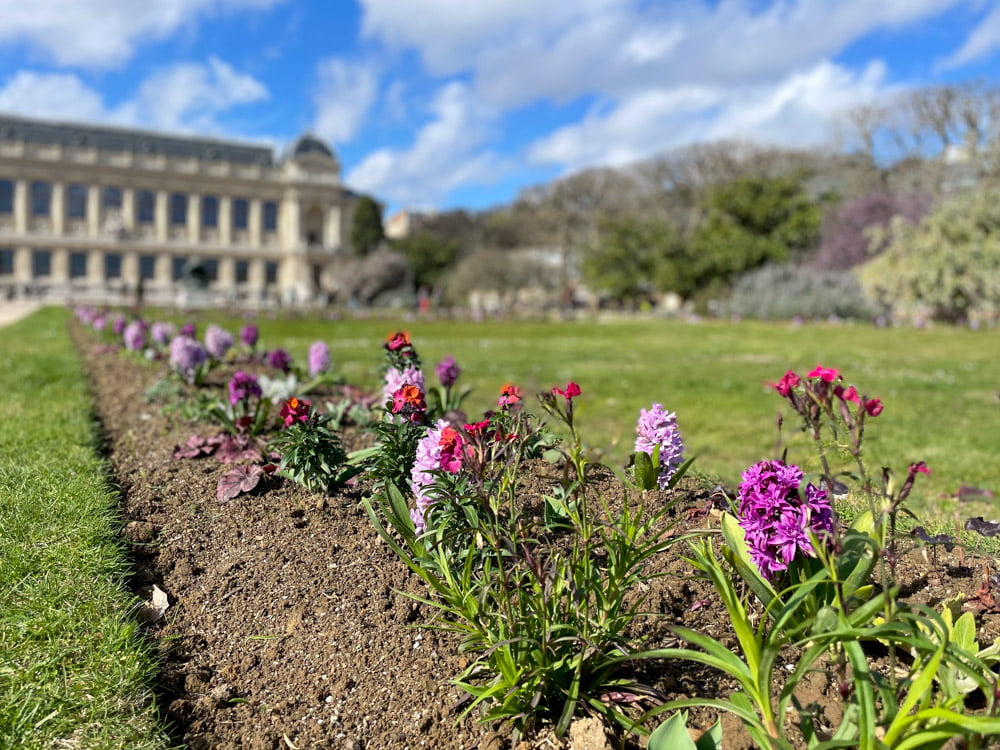
Flowers and gardens
The Jardin des Plantes in Paris presents a wide selection of thematic gardens, including the alpine garden, the ecological garden and the iris garden, to name but a few. The Iris Garden, created in 1964, is home to numerous varieties of flowers and plants worldwide. The Rock and Peony Garden illustrates the geological diversity of the Earth through different types of rock. In contrast, the Rose Garden, planted in 1990, is home to more than 170 species and varieties of roses.
On the other hand, the Alpine Garden is home to more than 2000 mountain plants of different origins, from Corsica to Morocco, from the Alps to the Himalayas. Finally, the Ecological Garden, opened in 1938 and can only be visited with a guided tour, offers an immersion in an unusual natural landscape in the heart of Paris.
The greenhouses of the Jardin des Plantes
The greenhouses of the Jardin des Plantes represent a journey through distant countries to discover a complex and fragile plant world that we must preserve. The four greenhouses present a vast collection of tropical and subtropical plants divided into humid tropical forests, arid zones, New Caledonia and the history of plants during geological eras.
Grandes Serres
57 rue Cuvier
75005 Paris
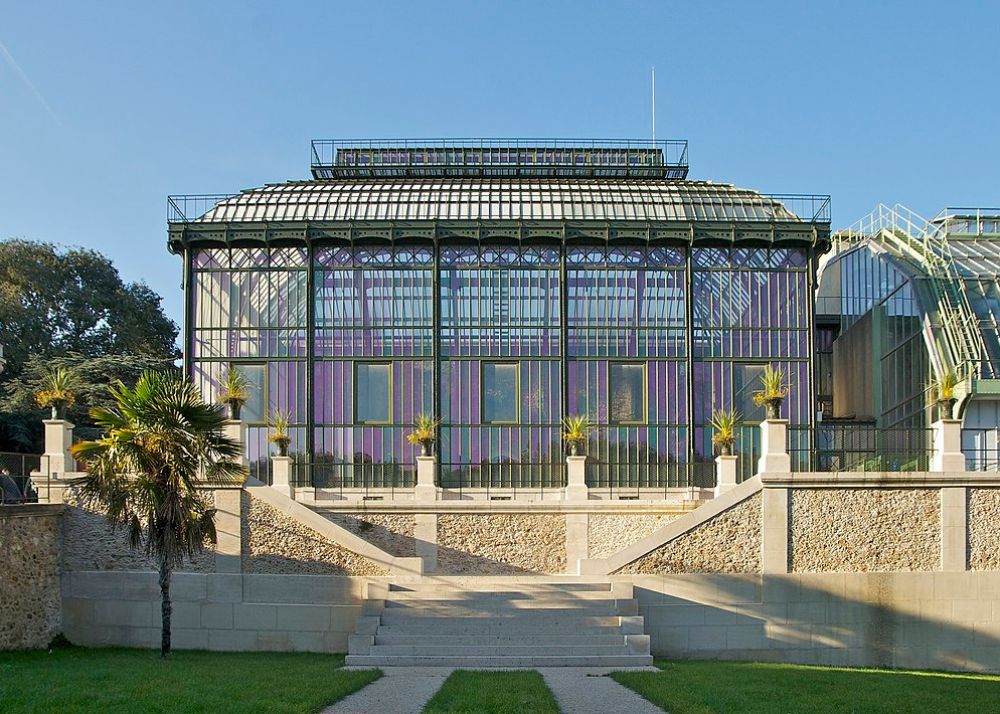
The Ménagerie zoo
The Ménagerie at the Jardin des Plantes is the oldest zoo in the world, created in 1794. It currently houses around 500 animals, almost half of which are endangered species, such as red pandas, snow panthers and orangutans. You can observe the animals walking along the paths in a wooded area. They live in log and thatch huts designed back in 1802.
The zoo aims to raise awareness of preserving biodiversity and offers guided tours and meetings with trainers. Most animals are born in captivity and come from exchanges and loans between zoos. New animals are born every year, offering hope for the survival of endangered species.
Ménagerie
57 rue Cuvier
75005 Paris
The museums inside the Jardin des Plantes in Paris
As well as being one of the largest botanical gardens in the city and one of the oldest in the world, the Jardin des Plantes also houses a series of museums dedicated to natural history. These museums are part of Paris’s Musée National d’Histoire Naturelle museum system. Within this fascinating green oasis in the French capital, you can visit the Great Gallery of Evolution, the Gallery of Palaeontology and Comparative Anatomy, the Gallery of Geology and Mineralogy and the Museum of Man.
The Great Gallery of Evolution
The Grande Galerie de l’Évolution, the main building of the Garden, is an architectural marvel built in 1889, a few weeks after the Eiffel Tower. Apart from its exterior beauty, the museum’s interior captures visitors’ attention. The collection of animals and plants, divided into three main rooms, is truly impressive. The ground floor is about marine species, the first floor houses those that inhabit the land and their relationship with man, and the highest floor shows the evolution of life.
Inside the museum, you can admire several species of stuffed animals. Still, the surprise is the realistic set-up with lights and sounds from their habitat. (Read my article on the Great Gallery of Evolution to learn more). The building overlooks the Jardin des Plantes promenade, which stretches for almost 500 metres between two rows of trees, bordered on the left by the galleries and on the right by the greenhouses, the botany school and the ecological garden, following the symmetry typical of French gardens.
Grande Galerie de l’Évolution
36 Rue Geoffroy-Saint-Hilaire
75005 Paris

The Palaeontology and Comparative Anatomy Gallery
The Palaeontology and Comparative Anatomy Gallery, one of the oldest museums in the Jardin des Plantes, is a must for natural history lovers. The vast collection of fossils, skeletons and models of prehistoric animals, and impressive dinosaur skeletons make it particularly interesting for families with children. (Read my article on what to see at the Gallery of Palaeontology and Comparative Anatomy). The display reconstructs the evolutionary scale of living organisms on Earth, from the appearance of life to present-day forms.
Galerie de Paléontologie et d’Anatomie Comparée
2 Rue Buffon
75005 Paris
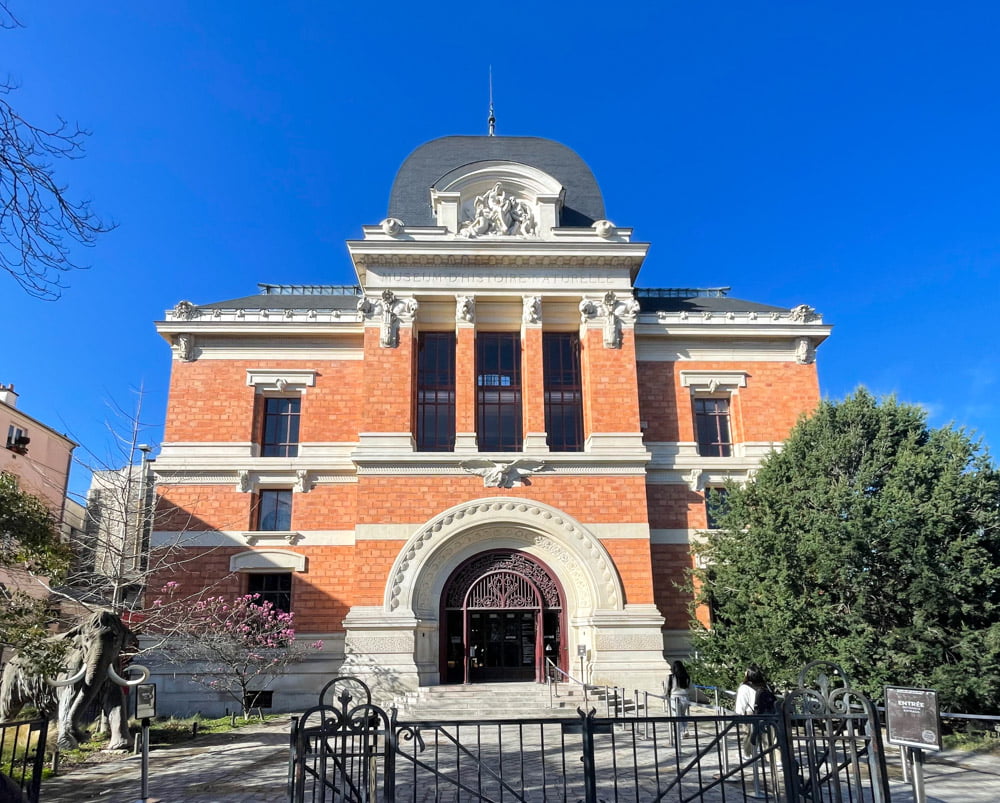
The Gallery of Geology and Mineralogy
The Gallery of Geology and Mineralogy at the Jardin des Plantes exhibits many minerals and rocks from worldwide, including diamonds, amethysts and topazes. If you’re a mineral and rock enthusiast, you’ll love it. The treasures of this museum include Martian meteorites, giant crystals, rocks and minerals of all kinds that tell the story of the Earth and the solar system.
Galerie de Géologie et de Minéralogie
36 Rue Geoffroy-Saint-Hilaire
75005 Paris
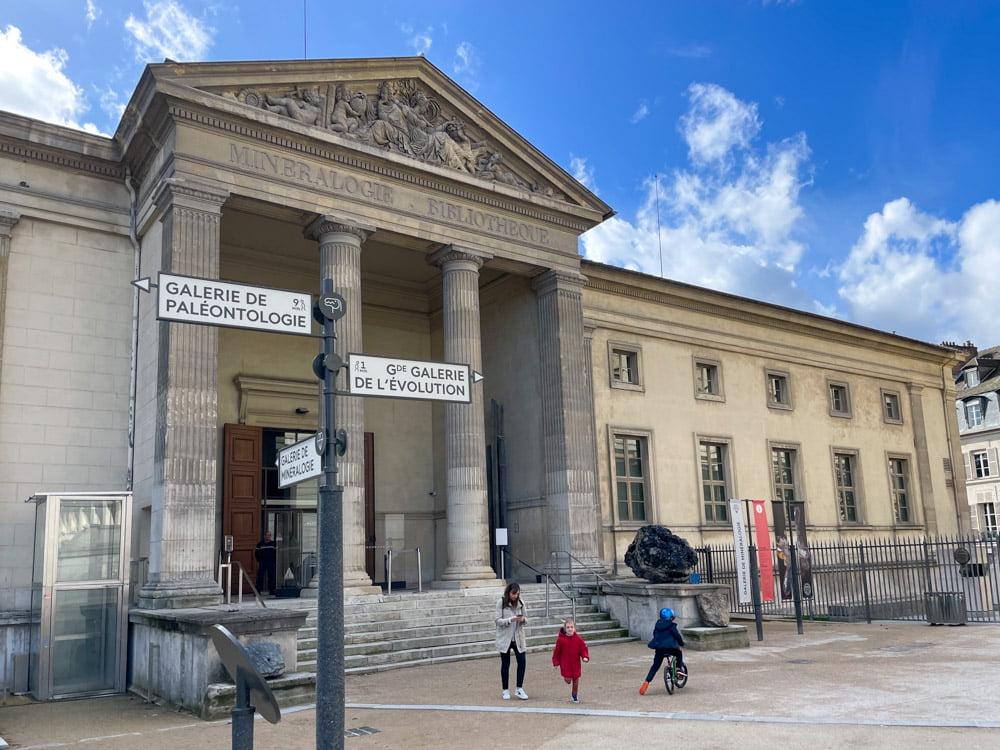
Where to stay in Paris
Sleeping in Paris can be expensive, prompting you to consider staying outside the city centre. In such a case, before selecting a hotel, I suggest you read my article on the best and worst neighbourhoods to stay in Paris.
I’ve visited Paris on several occasions for leisure and work, and I recommend a few places I’m familiar with. If you’re looking for a unique stay, Hôtel de Joséphine Bonaparte, built inside a 17th-century convent and located in the Marais district, is an excellent choice.
To save money, opt for the more affordable Hotel Bloum, situated close to the Opera and decorated with customised furnishings. Alternatively, the Aparthotel Adagio Paris Montmartre offers contemporary, self-catering apartments, perfect for families looking for more space in their rooms.
Jardin des Plantes: a must-see park in Paris
In short, the Jardin des Plantes in Paris offers a wide choice of activities for visitors to the French capital, from a stroll through the urban park to some of the most visited museums. With numerous thematic areas and attractions, the Jardin des Plantes was initially a medicinal herb garden and now houses the labyrinth, historical trees, flowers and gardens, greenhouses and the Ménagerie zoo.
In addition, the park is home to three museums, including the Great Gallery of Evolution, the Gallery of Palaeontology and Comparative Anatomy and the Gallery of Geology and Mineralogy, which can enrich your visit to Paris, alone or with children, with new discoveries.
Share your thoughts in the comments about the Jardin des Plantes if you already know it or have added it to your list of places to visit in Paris after reading this article.
